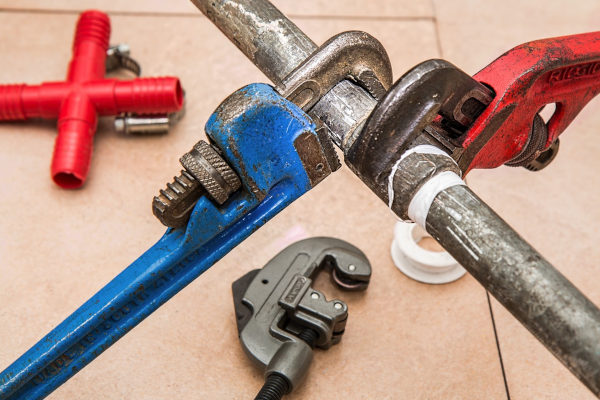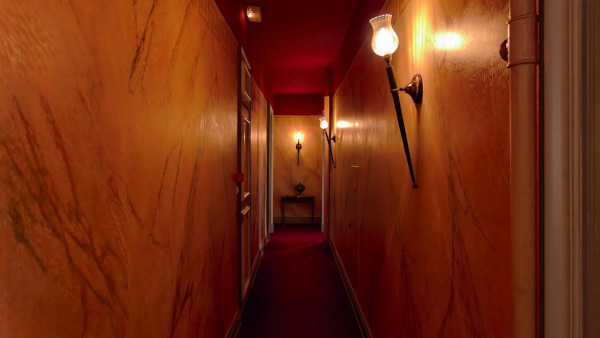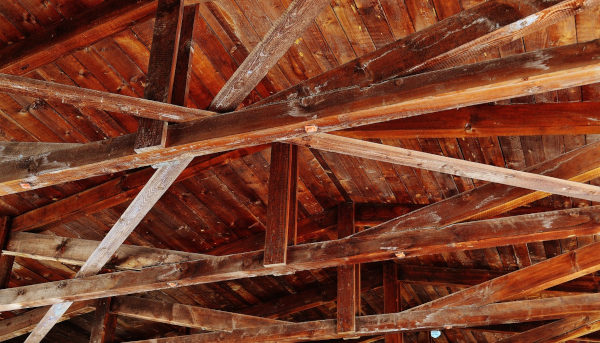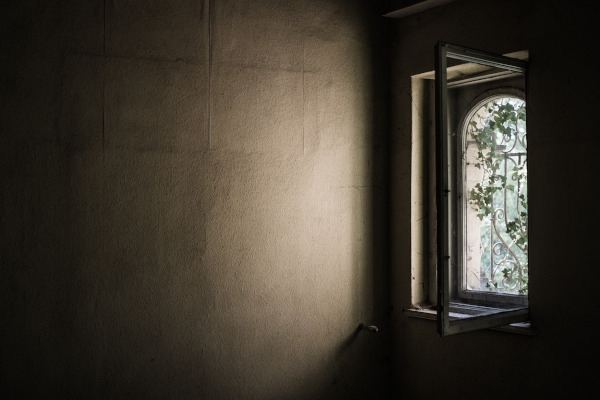
Ever felt like your home just doesn’t flow? That there’s a stagnant energy that zaps your mood and productivity? It might not be your imagination. In the world of feng shui, the ancient Chinese practice of harmonizing energy, house features can play a surprising role in shaping the atmosphere of your living space. From poorly positioned doors to irregularly shaped rooms, seemingly minor details can create energetic imbalances that affect your well-being.
But fear not! This guide is your roadmap to identifying and remedying common feng shui issues in your home. We’ll delve into 12 key features, exploring their energetic impact and offering practical solutions to transform your space into a haven of harmony. Get ready to unlock the hidden potential of your home and cultivate a vibrant, positive energy flow that nourishes your mind, body, and spirit.
Poorly Positioned Front Door
Your front door serves as the gateway through which energy enters your home, making it a crucial element in feng shui. It symbolizes opportunities, and abundance flowing into your life. Therefore, its positioning can significantly impact the type and quality of energy that enters your living space.
Signs of a Poorly Positioned Front Door
A poorly positioned front door can disrupt the flow of positive energy into your home and may manifest in various ways. Some common signs include:
- Blocked pathways or obstacles obstructing the entrance, hindering the smooth flow of chi.
- A front door aligned directly with a staircase creates a rush of energy that may lead to feelings of instability or restlessness.
- A front door facing a sharp corner or a T-junction outside, which can result in energy rushing too quickly past your home, leading to potential challenges in health, finances, or relationships.
Remedies and Solutions
Fortunately, there are several remedies and solutions to address a poorly positioned front door and enhance the flow of positive energy:
- Use landscaping or strategically placed plants to redirect and slow down the flow of chi toward your front door.
- Install a wind chime or a decorative element near the entrance to disperse and harmonize incoming energy.
- Place a mirror or a Bagua mirror on the exterior of your front door to deflect negative energy and invite positive chi into your home.
- Incorporate lighting, such as bright outdoor fixtures or a welcoming porch light, to illuminate the path to your front door and attract beneficial energy.
Staircase Facing the Front Door
In feng shui, staircases are considered pathways for energy to travel between different levels of a home. The placement of a staircase, particularly when facing the front door, can have a significant impact on the flow of chi within your living space. Ideally, staircases should be positioned to promote the smooth and harmonious circulation of energy throughout the home.
Effects of Staircase Facing Front Door
When a staircase directly faces the front door, it can create a challenging energy dynamic that may affect the inhabitants of the home in various ways. Some potential effects include:
- Rapid dispersal of energy entering through the front door, leading to feelings of instability or restlessness.
- Difficulty in retaining positive chi within the home, as it may quickly rush upstairs and bypass other areas of the house.
- Potential for financial or relationship challenges, as the energy entering the home, may not be adequately distributed and nourished.
Remedies for Staircase Placement
To mitigate the negative effects of a staircase facing the front door and promote a more balanced flow of energy, consider implementing the following remedies:
- Place a decorative screen or partition between the staircase and the front door to create a sense of separation and slow down the flow of chi.
- Hang a crystal or wind chime near the staircase to disperse and harmonize the energy, preventing it from rushing too quickly through the space.
- Install a runner or carpet on the staircase to absorb excess energy and create a sense of grounding and stability.
- Incorporate artwork or lighting fixtures on the staircase wall to redirect and guide the flow of chi in a more harmonious manner.
Related reading: 18 Interior Design Elements that are BAD Feng Shui – Opens in new tab
Bathroom Doorway Facing the Main Door
When the doorway of a bathroom directly faces the main door of a home, it can create a challenging feng shui situation with potential negative effects on the energy flow within the space. This alignment may lead to:
- The escape of positive energy, as the vital life force, or chi, entering through the main door may be quickly drained or contaminated by the energy associated with the bathroom.
- Disruptions in the flow of energy throughout the home, which can manifest as feelings of stagnation, discomfort, or lack of vitality.
- Challenges in maintaining privacy and boundaries within the living space, as the direct alignment between the bathroom and the main door may compromise a sense of security and sanctuary.
Identifying Bathroom Doorway Alignment Issues
Identifying whether your bathroom doorway directly faces the main door requires a simple observation of the layout and alignment of your home. If, upon entering your home, the doorway of a bathroom is immediately visible and aligned with the main entrance, it indicates a potential alignment issue that may disrupt the flow of energy within the space.
Solutions for Bathroom Doorway Alignment
To remedy the negative effects of a bathroom doorway facing the main door and restore balance to the energy flow within your home, consider implementing the following solutions:
- Keep the bathroom door closed at all times to contain and minimize the flow of energy between the bathroom and the main entrance.
- Place a mirror on the outside of the bathroom door to deflect and redirect energy away from the main entrance, creating a barrier that helps to preserve the integrity of the space.
- Hang a curtain or decorative screen over the bathroom doorway to visually separate it from the main entrance, creating a sense of privacy and containment.
- Incorporate plants or natural elements near the main entrance to counterbalance any negative energy coming from the bathroom and promote a sense of vitality and renewal within the space.
Staircase in The Middle of a Home
The location of a staircase within a home is a critical aspect of feng shui design, as it directly influences the flow of energy throughout the space. When a staircase is positioned at the middle of a home, it can have both positive and negative implications for the overall energy dynamics.
Effects of Staircase in the Middle of a Home
Having a staircase situated in the middle of a home can impact the energy flow in several ways:
- Positive aspects may include the staircase serving as a central axis, facilitating the distribution of energy evenly to different areas of the home.
- However, the staircase can also act as a divider, potentially disrupting the flow of chi and creating a sense of separation between the upper and lower levels of the house.
- Additionally, if the staircase is excessively large or dominates the central space, it may create a feeling of heaviness or imbalance in the home’s energy.
Remedies for Staircase Placement
To optimize the placement of a staircase in the middle of a home and promote a harmonious energy flow, consider implementing the following remedies:
- Ensure that the staircase is well-lit and ventilated to encourage positive energy circulation throughout the space.
- Incorporate design elements such as open railings or glass panels to visually expand the area around the staircase and create a sense of openness and connectivity.
- Introduce decorative elements or artwork near the staircase to enhance its aesthetic appeal and draw positive energy towards it.
- Use color and texture to integrate the staircase seamlessly into the overall design of the home, minimizing its impact on the flow of chi.
Related reading: 17 External Features of a House that are Bad Feng Shui and How to Fix It – Opens in new tab
Long, Narrow Hallway
In feng shui, hallways are regarded as channels through which energy, or chi, flows within a home. The design and layout of a hallway play a crucial role in determining the quality of energy circulation and its impact on the overall harmony and balance of the living space. When a hallway is long and narrow, it can present unique challenges from a feng shui perspective.
Effects of Long, Narrow Hallways
Long, narrow hallways can have several effects on the energy flow within a home:
- Hindered chi flow: The narrow width of the hallway may impede the smooth circulation of energy, leading to stagnation or blockages that can affect the energy balance throughout the home.
- Sense of confinement: The elongated nature of the hallway may create a sense of constriction or claustrophobia, inhibiting the free flow of movement and energy within the space.
- Lack of vitality: A long, narrow hallway may lack visual interest or focal points, resulting in a dull or lifeless atmosphere that can drain energy and enthusiasm from the surrounding areas.
Remedies for Long, Narrow Hallways
To remedy the feng shui challenges posed by a long, narrow hallway and promote a more harmonious energy flow, consider implementing the following solutions:
- Enhance lighting: Adequate lighting is essential to brighten and uplift the energy in a narrow hallway. Install bright overhead lights or wall sconces to illuminate the space and create a sense of openness and vitality.
- Create visual interest: Introduce elements of visual interest such as artwork, mirrors, or decorative accents along the walls of the hallway to break up the monotony and stimulate positive chi flow.
- Incorporate mirrors: Placing mirrors strategically in a narrow hallway can visually expand the space and reflect light, creating a sense of depth and openness that counteracts feelings of confinement.
- Use color and texture: Choose light, neutral colors for the walls and flooring of the hallway to create a sense of spaciousness and tranquility. Incorporate textures such as rugs or wall hangings to add warmth and dimension to the space.
Misaligned Beams
In feng shui, beams are considered structural elements that can influence the flow of energy within a space. When beams are improperly positioned and pointing in the wrong direction, they can create negative energy that disrupts the harmony and balance of the environment. Some potential effects of misaligned beams include:
- Feelings of oppression or heaviness in the affected area, as the downward pressure exerted by the beams can impede the natural flow of chi.
- Increased stress or tension among occupants, as the presence of misaligned beams can create a sense of unease or discomfort.
- Potential health issues, as prolonged exposure to the negative energy generated by misaligned beams may contribute to physical ailments or fatigue.
Detecting Improperly Positioned Beams
Identifying whether beams in your home are pointing in the improper direction requires careful observation of the structural layout and design. Some common indicators of misaligned beams include:
- Beams intersecting directly with doorways or windows, creating a sense of obstruction or imbalance in the flow of energy.
- Beams positioned directly above areas where occupants spend a significant amount of time, such as beds, desks, or seating areas, potentially causing feelings of discomfort or unease.
- Visible signs of structural stress or damage, such as cracks in walls or ceilings near the location of the beams, indicating potential issues with the flow of energy.
Remedies for Misaligned Beams
To remedy the negative effects of misaligned beams and restore balance to the energy flow within your home, consider implementing the following solutions:
- Use feng shui cures such as crystals, wind chimes, or mirrors to deflect and neutralize the negative energy generated by misaligned beams.
- Incorporate decorative elements such as paint, wallpaper, or molding to visually camouflage the beams and minimize their impact on the overall aesthetics of the space.
- Consult with a qualified structural engineer to assess the structural integrity of the beams and determine the most effective course of action for remediation.
🍀 Our “Feng Shui Master” app is your trusted companion, offering a useful guide to implementing Feng Shui principles. Try it now!
The Front Entrance and The Back Entrance Are Perfectly Lined
In feng shui, the alignment of entrances within a home is of paramount importance, as it directly influences the flow of energy, or chi, throughout the space. When the front entrance and the back entrance are perfectly lined, it creates a unique energy dynamic that can impact the overall harmony and balance of the environment.
Effects of Perfectly Lined Entrances
Having perfectly lined entrances in a home can have several effects on the energy flow and occupants:
- Rapid chi flow: The alignment of the front and back entrances creates a direct pathway for energy to enter and exit the home, potentially leading to a rapid flow of chi that may feel overwhelming or uncontrolled.
- Lack of privacy: The direct alignment of entrances may compromise privacy and security within the home, as energy and attention may easily pass through both entrances without being filtered or contained.
- Challenges in retaining energy: The perfectly lined entrances may result in energy bypassing certain areas of the home, leading to uneven distribution and potential imbalances in different areas.
Remedies for Entrance Alignment
To remedy the effects of perfectly lined entrances and restore balance to the energy flow within your home, consider implementing the following solutions:
- Create a barrier: Introduce elements such as plants, screens, or furniture near the entrances to create a sense of separation and slow down the flow of chi between the front and back of the home.
- Enhance the front entrance: Place emphasis on the front entrance by enhancing its curb appeal, adding lighting, or incorporating welcoming elements such as plants or artwork to attract positive energy and encourage its retention within the home.
- Activate the back entrance: Utilize the back entrance as a secondary point of entry by creating a welcoming pathway, adding lighting, or incorporating decorative features to encourage the flow of positive chi into the home.
- Balance the energy: Use feng shui remedies such as mirrors, crystals, or wind chimes to harmonize and balance the energy between the front and back entrances, ensuring that both areas receive and retain beneficial chi.
Dark and Dimly Lit Spaces
Lighting plays a crucial role in feng shui, as it directly influences the quality of energy, or chi, within a space. Adequate lighting promotes a vibrant and harmonious environment, while poor lighting can lead to stagnant or negative energy. Dark and dimly lit spaces can create imbalances in chi flow and impact the overall well-being of occupants.
Signs of Poor Lighting in a Home
Identifying signs of poor lighting in a home is essential for assessing its impact on feng shui. Some common indicators of inadequate lighting include:
- Shadows or dark corners in rooms, indicating areas where chi may become stagnant or blocked.
- Difficulty in performing tasks or activities due to insufficient illumination, leading to feelings of frustration or discomfort.
- A lack of warmth or vitality in the atmosphere, as dim lighting can dampen the energy and enthusiasm within a space.
Ways to Brighten Dark Spaces
To brighten dark and dimly lit spaces and improve the feng shui of your home, consider implementing the following strategies:
- Maximize natural light: Open curtains or blinds during the day to allow natural light to flood into the space. Position mirrors strategically to reflect and amplify natural light throughout the room.
- Use layered lighting: Incorporate a variety of light sources, including overhead fixtures, lamps, and task lighting, to create layers of illumination that can be adjusted to suit different activities and moods.
- Choose light colors: Opt for light-colored walls, flooring, and furnishings to reflect and amplify light, creating a sense of spaciousness and brightness within the space.
- Add accent lighting: Install accent lighting such as wall sconces, track lighting, or under-cabinet lights to highlight architectural features, artwork, or focal points and add depth and dimension to the room.
- Maintain cleanliness: Keep light fixtures and bulbs clean and free of dust or debris to ensure optimal brightness and clarity of illumination.
Related reading: Effects of Bad Feng Shui on Your Life and How to Fix It – Opens in new tab
Broken or Leaking Plumbing
Plumbing issues, such as broken or leaking pipes, can have a significant impact on the feng shui of a home. Water is a symbol of wealth and abundance in feng shui, and any disruptions to its flow can disrupt the flow of energy, or chi, within the space. Leaking or broken plumbing can lead to stagnant water, moisture buildup, and potential structural damage, all of which can contribute to negative energy and challenges in various aspects of life, including finances, relationships, and health.

Signs of Broken or Leaking Plumbing
Identifying signs of broken or leaking plumbing within your home is essential for addressing these issues promptly. Some common signs of plumbing problems include:
- Water stains or discoloration on walls, ceilings, or floors, indicating the presence of moisture or water leaks.
- Dripping or running water sounds, even when faucets or fixtures are turned off, suggesting leaks or pipe damage behind walls or under floors.
- Unpleasant odors or musty smells, which may indicate mold or mildew growth resulting from water damage or moisture buildup.
Fixing Plumbing Problems
Fixing plumbing problems promptly is essential for maintaining the feng shui of your home and preventing further damage. Some steps for addressing plumbing issues include:
- Identify the source of the problem: Locate the source of the plumbing issue, whether it’s a leaky pipe, dripping faucet, or clogged drain, and assess the extent of the damage.
- Repair or replace damaged components: Fix broken or leaking pipes, faucets, or fixtures by repairing or replacing damaged components as needed. Hire a qualified plumber to perform repairs safely and effectively.
- Address water damage: Clean up any water damage or moisture buildup resulting from plumbing issues to prevent mold, mildew, or structural damage. Use fans, dehumidifiers, or waterproofing materials to dry out affected areas and prevent further damage.
- Prevent future problems: Take proactive measures to prevent future plumbing issues by maintaining regular maintenance and inspections of plumbing systems, addressing minor repairs promptly, and avoiding behaviors that can contribute to damage, such as pouring grease down drains or flushing non-biodegradable items down toilets.
Related reading: 11 Feng Shui Benefits That Will Transform Your Life (From Sleep to Success!)-Opens in new tab
Irregularly Shaped Rooms
In feng shui, the shape and layout of rooms play a significant role in determining the flow of energy, or chi, within a space. Irregularly shaped rooms can present unique challenges from a feng shui perspective, as they may disrupt the natural circulation of energy and create imbalances in the environment. Understanding the feng shui view on room shapes is essential for optimizing the energy flow and promoting harmony within your home.

Signs of Irregular Room Shapes
Identifying irregularly shaped rooms within your home requires careful observation and assessment. Some common signs of irregular room shapes include:
- Angled or asymmetrical walls that deviate from conventional geometric shapes such as squares or rectangles.
- Awkward or challenging floor plans result in wasted or unusable space, making it difficult to arrange furniture or decor in a harmonious manner.
- Uneven or irregular dimensions that create visual distortion or imbalance within the room, leading to feelings of discomfort or unease among occupants.
Solutions for Irregular Rooms
To address the challenges posed by irregularly shaped rooms and improve the feng shui of your home, consider implementing the following solutions:
- Enhance the flow of chi: Use feng shui principles such as decluttering, organization, and space clearing to optimize the flow of energy within irregularly shaped rooms and promote a harmonious atmosphere.
- Create balance: Arrange furniture and decor in a way that balances the irregularities of the room and creates a sense of visual harmony and cohesion. Use elements such as rugs, artwork, or plants to anchor and define different areas within the space.
- Maximize functionality: Make the most of irregularly shaped rooms by maximizing functionality and usability. Utilize versatile furniture pieces such as modular sofas or multipurpose storage solutions to adapt to the unique layout of the room and optimize space utilization.
- Incorporate mirrors: Place mirrors strategically to visually expand and open up irregularly shaped rooms, creating the illusion of larger and more spacious surroundings. Mirrors can also reflect and amplify natural light, enhancing the brightness and vitality of the space.
- Embrace creativity: Embrace the unique characteristics of irregularly shaped rooms as opportunities for creativity and expression. Experiment with unconventional design elements, colors, and textures to personalize the space and infuse it with your personality and style.
| Irregular Room Shape | Challenges | Solutions |
| Angled Walls | Difficulty arranging furniture and decor | 1. Use modular furniture to adapt to angles. |
| Visual imbalance due to asymmetry | 2. Place large, statement pieces of furniture along angled walls to create focal points. | |
| Awkward flow of chi and energy | 3. Hang mirrors strategically to visually expand the space and counteract the effects of angled walls. | |
| Limited functionality of space | 4. Use area rugs to define separate zones within the room and create visual continuity. | |
| Acoustic challenges due to irregular shapes | 5. Install sound-absorbing materials on angled walls to improve acoustics and reduce echoes. | |
| Difficulty in maximizing natural light | 6. Install adjustable blinds or curtains to control light levels and minimize glare from angled windows. | |
| Asymmetrical Layout | Wasted or unusable space | 1. Use multifunctional furniture to maximize functionality in irregularly shaped areas. |
| Visual imbalance and distortion | 2. Balance asymmetry with symmetrical design elements, such as pairing asymmetrical furniture with symmetrical accessories. | |
| Difficulty in creating cohesive design | 3. Incorporate a unifying color scheme or theme throughout the room to tie disparate elements together. | |
| Limited options for furniture arrangement | 4. Experiment with different furniture layouts to find the arrangement that best complements the room’s shape. | |
| Challenges in defining functional zones | 5. Use area rugs, lighting, or decorative screens to delineate separate areas within the room. | |
| Oddly Shaped Rooms | Awkward traffic flow | 1. Define clear pathways and circulation routes to facilitate movement throughout the room. |
| Inefficient use of space | 2. Utilize versatile furniture pieces that can adapt to the unique layout of the room. | |
| Limited options for furniture placement | 3. Arrange furniture to create functional groupings and focal points that enhance the room’s layout. | |
| Acoustic challenges due to irregular shapes | 4. Incorporate sound-absorbing materials or rugs to improve acoustics and reduce echoes. | |
| Difficulty in maximizing natural light | 5. Position furniture and decor to optimize natural light exposure and minimize shadows. | |
Disconnected Spaces
Flow is a fundamental concept in feng shui, representing the smooth and harmonious movement of energy, or chi, within a space. When energy flows freely throughout a home, it nourishes and revitalizes the environment, supporting health, well-being, and prosperity. Disconnected spaces disrupt this flow of energy, leading to stagnation, imbalance, and potential challenges in various aspects of life.
Signs of Disconnected Spaces
Identifying signs of disconnected spaces within your home is essential for assessing their impact on feng shui. Some common indicators of disconnected spaces include:
- Areas of the home that feel isolated or separate from the rest of the environment, creating a sense of disconnection or disunity.
- Awkward or inefficient traffic patterns that impede the natural flow of movement and energy within the space.
- Lack of visual or physical continuity between different areas of the home, resulting in disjointed or disjointed aesthetics.
Techniques for Creating Flow
To promote flow and cohesion within your home and improve the feng shui of disconnected spaces, consider implementing the following techniques:
- Establish clear pathways: Define clear pathways and circulation routes throughout your home to facilitate the smooth and uninterrupted flow of energy and movement. Remove obstacles or clutter that obstruct these pathways and create barriers to flow.
- Create visual connections: Use design elements such as color, texture, and decor to create visual connections between different areas of the home, establishing a sense of continuity and harmony. Coordinate furnishings and accessories to create a cohesive and unified aesthetic that ties the space together.
- Enhance natural light: Maximize natural light sources such as windows, skylights, and glass doors to infuse the space with brightness and vitality. Natural light not only illuminates the environment but also stimulates positive energy flow and promotes a sense of openness and expansiveness.
- Incorporate transitional spaces: Introduce transitional spaces such as entryways, hallways, or alcoves to bridge the gap between disconnected areas and promote a sense of flow and integration. Use these spaces to create smooth transitions between different zones of the home and encourage movement and circulation.
- Integrate feng shui remedies: Incorporate feng shui remedies such as mirrors, water features, or indoor plants to activate and enhance positive chi flow within disconnected spaces. Place these remedies strategically to address specific areas of stagnation or imbalance and promote a more harmonious and balanced environment.
Related reading: Geography’s Role in Feng Shui: Choosing the Right Location – Opens in new tab
Poor Ventilation
Ventilation plays a crucial role in feng shui as it regulates the quality of air and the flow of energy, or chi, within a space. Proper ventilation ensures the circulation of fresh, oxygen-rich air throughout the home, which is essential for maintaining a healthy and harmonious environment. Poor ventilation can lead to stagnant chi, negative energy accumulation, and various health and well-being issues for occupants.
Signs of Poor Ventilation
Identifying signs of poor ventilation within your home is essential for assessing its impact on feng shui. Some common indicators of poor ventilation include:
- Stale or musty odors lingering in the air, indicating a buildup of pollutants, moisture, or airborne contaminants.
- Condensation or moisture accumulation on windows, walls, or ceilings, leading to mold growth, water damage, and potential structural issues.
- Stuffiness or discomfort in the air, as inadequate airflow fails to refresh and replenish the indoor environment, leading to feelings of lethargy or unease among occupants.
Improving Ventilation in the Home
To improve ventilation and enhance the feng shui of your home, consider implementing the following strategies:
- Install exhaust fans: Install exhaust fans in areas prone to moisture accumulation such as bathrooms, kitchens, and laundry rooms to remove stale air, odors, and excess humidity from the indoor environment.
- Open windows: Open windows regularly to allow fresh air to circulate throughout the home and flush out indoor pollutants, allergens, and toxins. Cross-ventilation, or opening windows on opposite sides of the home, can enhance airflow and promote natural ventilation.
- Use air purifiers: Use air purifiers equipped with HEPA filters to remove airborne particles, pollutants, and allergens from the indoor air, improving air quality and promoting a healthier living environment.
- Incorporate indoor plants: Introduce indoor plants such as peace lilies, spider plants, or snake plants to naturally purify the air and enhance indoor air quality. Plants not only filter out pollutants but also add beauty and vitality to the space.
- Maintain HVAC systems: Regularly inspect and maintain heating, ventilation, and air conditioning (HVAC) systems to ensure optimal performance and efficiency. Clean or replace air filters, ducts, and vents as needed to prevent obstruction and promote airflow.
End Words
Remember, creating a feng shui-friendly home isn’t about achieving perfection – it’s about mindful awareness and intention. By addressing the energy imbalances in your space, you’re taking an active step towards fostering a more harmonious and supportive environment.
So, embrace the journey, experiment with different solutions, and most importantly, trust your intuition as you craft a home that truly reflects your unique energy and brings you joy. With a little feng shui magic, you can unlock the full potential of your living space and turn it into a sanctuary of peace, well-being, and prosperity.
Want to learn more about Feng Shui? Check out our suggestions: Feng Shui Bookshelf – Opens in new tab
Stay in Touch
 Join our newsletter by using the forms on this website or click here!
Join our newsletter by using the forms on this website or click here! Follow us on Google News
Follow us on Google News Follow us on Facebook
Follow us on Facebook










